Ah yes, the traditional 15-6 part of our annual list, where we sail from the upper reaches down into the top ten, halting just shy of the coveted top five. Always an awkward part of the list to write about and justify, we like to think of it as the real crucible of this exercise, the stretch that separates the real trainspotters from the dilettantes and the people who have better things to do with their time. It’s tough (okay not really), but hey, it’s also a necessary step in the end of year ritual we’ve been participating in for five years now here at I Die: You Die.
As an aside, if you’re looking at yesterday’s or today’s entries and you’re thinking “Geez I would have included X and moved Y up a few spots”, that’s totally natural and in fact to be expected. Think about it: this list is already the synthesis of two people’s opinions, and as such is compromised by their personal biases, their individual preferences and their prejudices. How nuts would it be for us to expect anyone else on Earth to rank anything the same way we did given variations in taste? Which is our sneaky way of saying hey, feel free to leave your own Year End lists in the comments, we love reading them!
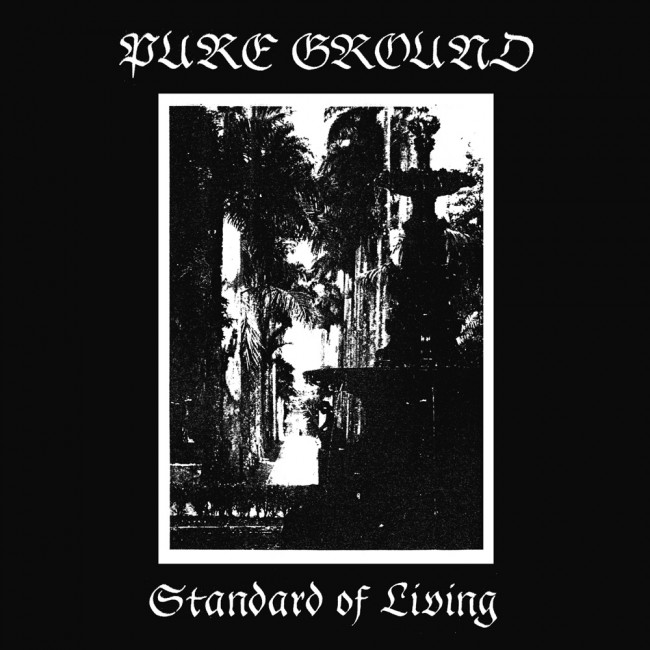
15. Pure Ground
Standard Of Living
Chondritic Sound
The resurgence of interest in minimal synth over the past decade has brought all manner of excellent reissues and new hybridizations of sound. But too often in the quest to excavate and reconsider the simple structures and melodies which accompanied those classic records, the more menacing and confrontational side of minimal synth is overlooked for the sake of tranquil bedroom compositions. No such reservations exist with Pure Ground. After a handful of 7″s and casette EPs, the duo of (Chondritic Sound honcho) Greh Holger and Jesse Short delivers a full length of cold, sneering, and raw tunes which view minimal wave as the mid-point between Suicide and The Klinik. Awash in the grime and violence of rotting cities, Standard Of Living‘s analogue squiggles and basslines conjure far more danger than a thousand played out sawtooth leads ever could. Read our full review.

14. Caustic
Industrial Music
Negative Gain Productions
Longtime (or even casual) readers know that we’ve been consistently impressed by Matt Fanale’s ability to reconfigure the sound, thematics, and even delivery systems of Caustic to suit his current releases. Following up 2012’s conceptually ambitious The Man Who Couldn’t Stop with a tighter suite of tunes with a clearer focus on rhythm might’ve led Fanale to crib from PIL’s Album as a means of begging off questions of style (it’s industrial music, dammit, and no, we don’t feel like having a week-long Facebook argument about what that means in 2015), but he hasn’t skimped on substance just because he’s gone with the store brand. Packed with the tightest and most effective set of grooves Fanale’s ever assembled, Industrial Music‘s feisty rage is about as perfect an introduction to this shit one could offer to a human music listening officemate. Read our full review.
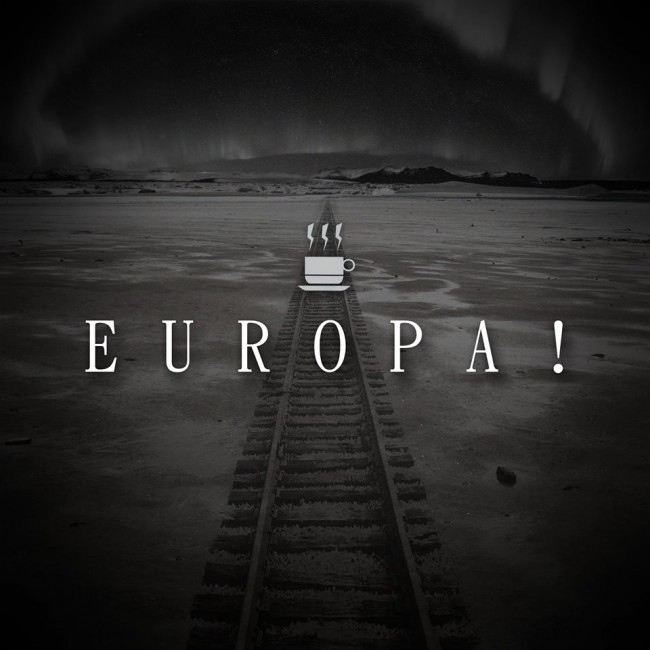
13. Sturm Café
Europa!
SCR
Returning ten years on from their debut, Sweden’s Sturm Café didn’t need to do much to make their trad EBM sound feel fresh. A light dash of synthpop around the corners, and a stoic revamp of their German vocals put Europa! front and center in the great wave of slightly off-kilter EBM coming out of Europe (and especially Sweden) in recent years. Full of the sort of classic bass programming rivetheads fiend for, softly melodic leads and wistful crooning, Europa! reminds us of why the original EBM template has remained so celebrated while finding all sorts of ways of skewering it. We’ve heard tell that there are levels of self-parody in the fractured lyrics, but even putting aside the language barrier, it can be tough to tell when they’re having a musical laugh (as on the sober “la la la” refrain on “Stark, Schön und Elegant”) rather than being entirely sincere. No matter what’s being lost in translation, Europa! is a sheer delight for body music fans. Read our full review.
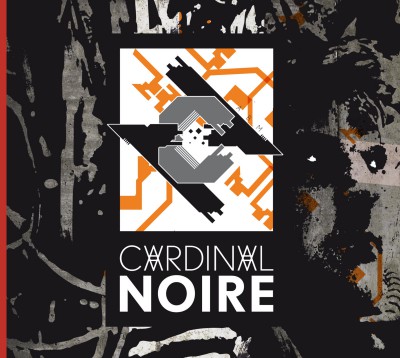
12. Cardinal Noire
self-titled
EKProduct
The so-called Vancouver Sound has become its own little electro-industrial cottage industry in the last couple of years, with bands around the world lining up to bow at the altar of Puppy. Few have ever delivered an album as good as Finland’s Cardinal Noire however, a record that succeeds and exceeds by tapping into the funk, noise, and the warped melodies of their biggest influence. It’s odd to think of an homage as being a multi-disciplinary affair, but that is precisely how the record approaches pastiche, cribbing this texture, that delivery, a dash of a certain bassline and synthesizing them into a whole that invokes without ever directly imitating. If you’re wondering how a band can possibly not suffer by comparison to the Kevins and Dwayne, we encourage you to give this eponymous record a shot; if you’re at all like us your doubts will be erased well before the first of many repeat listens. Read our full review.

11. Volt 9000
Timeshift
Artoffact Recordings
It’s ironic that an album about the vague and shadowy field of parapsychology would yield Volt 9000’s most naked and unadorned record. Stripped bare of most of their sample and distortion-heavy homages to Ogre & co., Cory Gorski and Andrew Dobbels come off as entirely weird on their own terms. And hell, they do so while turning out a batch of pensive tunes whose paranoia relies on inference and mood rather than overt politicking or media-manipulated manias. ‘Organic’ is hardly an adjective we’d commonly associate with such a synthetically inclined act, but pieces like “Mindgame” and the title track feel more like off the cuff expression and experimentation than meticulously constructed works. We’re not sure if automatic writing plays a role in Volt 9000’s workflow (or in parapsychology, for that matter), but whatever headspace the band got themselves into for this outing paid off marvelously. Read our full review.
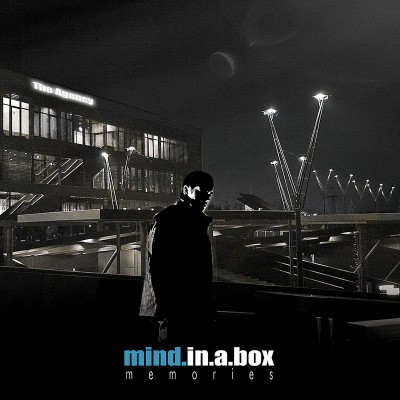
10. mind.in.a.box
Memories
Dreamweb Music/Metropolis
Stefan Poiss’ mind.in.a.box has gotten positively quixotic over the last couple of years, disappearing even further and further into the cyberpunk storyline that each of their albums is a chapter in. Memories even starts with what amounts to a “previously on mind.in.a.box” track, briefly outlining where we left off with Mr. Black and the rest of the cast, along with some authorial self-insertion as mind.in.a.box the band is now apparently a part of mind.in.a.box the story. If that sounds impenetrable or inaccessible, than never fear; for all the high concept narrative stuff, Poiss and company have rarely sounded as musically accessible as they do here. The project’s mix of electropop, progressive trance and prog rock (yeah, prog rock) is rendered here with aplomb, complete with vocal processing for different characters, wailing guitar solos and songs that lyrically spell out exactly what in god’s name all of it is supposed to mean. It’s hard to convey its breadth, but than again, explanations are kind of unnecessary. It’s mind.in.a.box, and for initiates, that’s more than enough justification. Read our full review.

9. Kite
VI
Progress Productions
It’s getting nigh impossible to accurately portray just how grandiose, melodramatic, and utterly necessary Kite’s near-annual EPs have become. On the one hand, yeah, they’re still the Swedish synth-pop all-stars who ran away with our hearts circa “Ways To Dance“, but they’ve turned into so much more by adding billowing waves of emotion and elaborate compositions to their delivery. If V‘s “Dance Again” had a Wildean protagonist dusting themselves off and leaving the gutter for the club, head full of stars, then “Up For Life” feels like a weeping ghost pricking its ears up at the sound of a rave being set up in the abandoned factory it haunts. If that analogy sounds a little forced, it’s only because VI is such an impossible chimera of production and feeling. Here’s the token bit where we mention that VI‘s being graded on a curve as an EP, but we long ago stopped fantasizing about a Kite LP. We wouldn’t want to do anything to disrupt this absolutely stellar synthpop odyssey, though at this point it seems like nothing could. Read our full review.
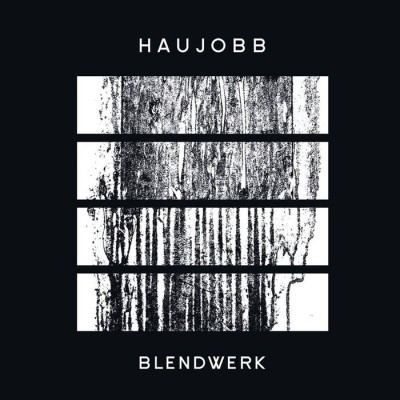
8. Haujobb
Blendwerk
Basic Unit Productions/Negative Gain Productions
By this point we’ve heard Haujobb reconfigure themselves and their sound so many times that it’s basically become an expected part of their take on post-industrial: a reinvention or renovation to accompany each album released. The story with Blendwerk was that Dejan Samardzic and Daniel Myer had gone miminal but that doesn’t hold up to scrutiny, beyond the record’s more stripped down arrangements there’s an entire world of complex and evolving production choices, impressive both for their depth and for how protean and malleable they are. It’s a record that works at both bird’s eye and microscopic view, delivering broadly accessible stompers like “Failures” and “Destroy”, then imbuing them with a universe of fine detail and deliberate empty space. It’s the approach Haujobb has engaged in for literal decades, using tension born from expert sound design to create music that is far more vast and that its broad outline should be able to contain. It’s the sound of Haujobb being themselves, and the acceptance that that can mean whatever Haujobb wants it to. Read our full review.
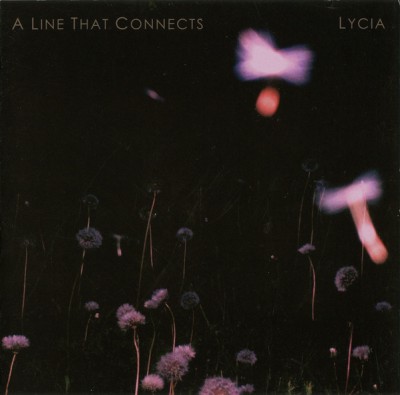
7. Lycia
A Line that Connects
Handmade Birds
Nobody should expect what comes in the middle of A Line That Connects, even after multiple listens the surprising shift from folky darkwave to full-bore gawth rawk can still catch you off guard. It’s not that it doesn’t make sense, quite the opposite: what makes it such an effective change up is that Lycia have been slowly ramping up to it so imperceptibly that when it happens you accept it without question. That’s the level of expertise that Mike VanPortfleet, Tara Vanflower, and David Galas bring to the table, mastery of dark rock forms that transcends their already considerable legacy as part of Projekt’s army of the ethereal in the 90s, and their excellent post-millenial releases. It might actually be their literal best record in terms of craft, each song locking in and guiding the listener up, down, and through the album’s varied topography. Sometimes smooth and easily travelled and sometimes wind-swept and turbulent, it’s an absolute gem from a band who haven’t just aged well, they’ve found a way to make a whole new set of virtues from their considerable experience. Read our conversation about the record.

6. Stendeck
Folgor
Tympanik
Patience is an odd quality to ascribe to a record, but in the case of Folgor patience means absolutely everything. Alessandro Zampieri has always had a yen for stylistic shifts, but the true strength of his sixth album of compositionally minded IDM comes from how unforced and fluid it all feels, always in movement without ever seeming like it’s in a rush. Which is not to say that it’s laidback: across the record’s 15 tracks you’ll find songs both uptempo (“Momentary Pleasure”, “Tonight is Forever”) and melancholic (“Sad Lover’s Song”). What you won’t find is a great deal of repetition; each time Zampieri dips into another style – be it bass, technoid, downbeat or ambient – he finds a new and contextual way to present it, always making sense for Stendeck, even as it casually plays with the idea of what exactly Stendeck sounds like. It’s a supremely accomplished album, bolstered even further by a smooth and unhurried dedication to wring the most out of each sonic interaction and the resolution of each musical idea. Read our full review.
Join us tomorrow for the top five, and our final post of 2015!







miab, Kite, Haujobb… this top 10 is already banging on all fronts!
I predict these for the top 5:
Dead When I Found Her – All the Way Down
Encephalon – Psychogenesis
Agent Side Grinder – Alkimia
High-Functioning Flesh – Definite Structures
?
Not necessarily in that order.
The only other thing I can think of for that 5th spot would be the new Neuroticfish album, although personally I would have ranked it in the 20-10 category.
Lots of my faves from this year in this list.
My guess for top 5 includes the 4 that Zander mentioned above + the new Nightmare Fortress, which includes 3-4 of the raddest songs of the year, IMHO (No Exit, A Life Worth Leaving, Mourning Star, Crawl to Me).
DWIFH seems like the front-runner but I wouldn’t be surprised if Encephalon got the #1 again. Listening to it right now.
I personally doubt that Nightmare Fortress will make the top 5, but I’ll say that in my opinion it definitely belongs in the top 10. My guess for the top 5 is:
#5: Neuroticfish, A Sign of Life
#4: Encephalon, Psychogenesis
#3: iVardensphere, Fable
#2: High Functioning Flesh, Definite Structures
#1: Dead When I Found Her, All The Way Down
If I’m right in the choices if not in the ordering, I’ll be surprised by the lack of Ego Likeness.
On an unrelated note, I’m really happy to see Pure Ground getting this high on the list. One of my personal favorites.
Hmm. After re-reading the reviews, I think your top 5 is closer than mine. Forgot about Neuroticfish & iVardensphere. I assume Encephalon & DWIFH are locks. That means that two of Agent Side Grinder, Nightmare Fortress, iVS, Neuroticfish, & HFF are not in the top 25. Pretty good year… 🙂
Fantastic year, almost an embarrassment of riches. I do not envy the task of whittling down and ordering these lists. The honorable mentions list (which i think they stopped doing?) is probably a mile long.
The #1 spot in the ID:YD year end list has ALWAYS gone to something released by Artoffact (sometimes in cooperation with another label, sometimes not), so if that pattern holds there’s a pretty good chance it will be the DWIFH album.
How about Cocksure? Author & Punisher? Or is he too “mainstream” now?
Stars Crusaders – New Horizons
I’ll venture a guess. In no particular order:
Ego Likeness
Mindless Faith
Beauty Queen Autopsy
IAMX
wild card – DWIFH, Go Fight, iVardensphere, High-Functioning Flesh, Mumford & Really Fucked-Up Sons
We thought Mumford & Really Fucked Up Sons showed a lot of growth this year, but that one fucked up son’s lazy eye creeps us out and we didn’t want to risk getting his attention.